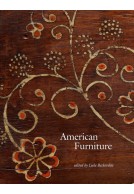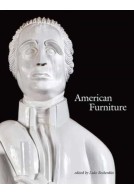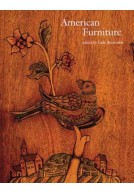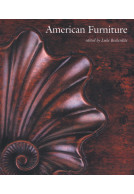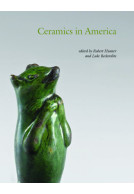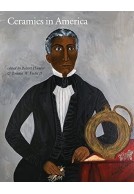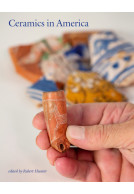Google Books previews are unavailable because you have chosen to turn off third party cookies for enhanced content. Visit our cookies page to review your cookie settings.
American Furniture 2024 (Hardback)
Imprint: Chipstone Foundation
Series: American Furniture Annual
Pages: 286
Illustrations: 220
ISBN: 9781737717539
Published: 31st January 2025
Script Academic & Professional
Series: American Furniture Annual
Pages: 286
Illustrations: 220
ISBN: 9781737717539
Published: 31st January 2025
Script Academic & Professional
Usually available in 6-8 weeks.
You'll be £64.00 closer to your next £10.00 credit when you purchase American Furniture 2024. What's this?
+£4.99 UK Delivery or free UK delivery if order is over £40
(click here for international delivery rates)
Need a currency converter? Check XE.com for live rates
(click here for international delivery rates)
Need a currency converter? Check XE.com for live rates
American Furniture 2024 continues to publish new research on furniture made in America. The first part of this volume contains two articles that each focus on a group of mid-eighteenth century seating furniture. The first was made in the vicinity of Edenton, North Carolina and its carved ornament and construction details are compared to contemporaneous interior architectural carving and several card and writing tables. The second identifies a group most likely made in a single shop in Annapolis, Maryland and discusses its influences, related forms, and possible makers. The remaining articles examine the products of specific cabinetmakers working in Salem, Massachusetts, Hartford, and Baltimore. In Salem, the evidence from a serpentine chest made by William King sheds light on several competing shops working during the late eighteenth century; the vitality of the town’s cabinetmaking trade during the early nineteenth century is seen in the patronage of Mark Pitman by three generations of the Ropes-Orne family. Aaron Chapin’s shop in Hartford is the subject of a study that explores the size, workers, range of products, and adaptability of a large and successful cabinetmaking business around the turn of the nineteenth century. Finally, the identification of the owner of a suite of colorfully painted furniture reveals that the acquisition of “fancy” furnishings made by the Finlay shop signaled not only economic success but acceptance within the political and social elite of early nineteenth-century Baltimore.
Other titles in the series...
Other titles in Chipstone Foundation...










